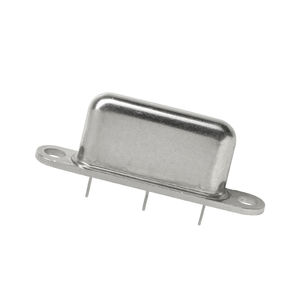
- Detection - Measurement
- Position, Speed and Acceleration Measurements
- 1-axis inclinometer
- The Fredericks Company

- Company
- Products
- Catalogs
- News & Trends
- Exhibitions
Single-axis tilt sensor 0711-0768-99analogRS-485RS-232
Add to favorites
Compare this product
Characteristics
- Number of axes
- single-axis
- Output
- analog, RS-485, RS-232
- Technology
- electrolytic
- Inclination
Max.: 3 °
Min.: -3 °
- Resolution
0.0003 °
Description
This electrolytic tilt sensor (also sometimes called an electronic tilt sensor) gives narrow range measurement up to ±3° with an extremely high accuracy of ±0.0008° in one axis (single-axis measurement). This means that you’ll need two sensors to read in two axes (with orthogonal mounting, or mounted at a 90° angle). It’s a glass, hermetically sealed sensor for use in less extreme environments than our similar Fredericks all-metal tilt sensors. This sensor is the highest accuracy sensor we offer, but it’s also higher cost than similar 0717 and 0703 series sensors.
All of our electrolytic sensors require an electrolytic tilt sensor circuit (also commonly referred to as signal conditioning or a signal conditioner) to provide a tilt angle output. This can be built into your system or you can purchase an electrolytic tilt sensor circuit we’ve designed. Our circuits are optimized for the best performance from our electronic tilt sensors.
To learn more about the principles of electrolytic sensors and how to integrate our sensors into your application, see our Technical Information page. Confused about terminology? The following terms are often used interchangeably, though they have slightly different meanings; tilt sensor, electrolytic tilt sensor, and electronic tilt sensor.
VIDEO
Related Searches
- Tilt sensor
- Digital tilt sensor
- Dual-axis inclinometer
- MEMS tilt sensor
- Multi-axis inclination sensor
- Analog tilt sensor
- Single-axis inclinometer
- High-precision tilt sensor
- IP67 tilt sensor
- Tilt switch
- Angle measurement tilt sensor
- RS-485 tilt sensor
- Waterproof tilt sensor
- Electrolytic tilt sensor
- RS-232 tilt sensor
- Dual-axis tilt switch
- Digital tilt switch
- 1-axis tilt switch
- Programmable tilt switch
*Prices are pre-tax. They exclude delivery charges and customs duties and do not include additional charges for installation or activation options. Prices are indicative only and may vary by country, with changes to the cost of raw materials and exchange rates.

















